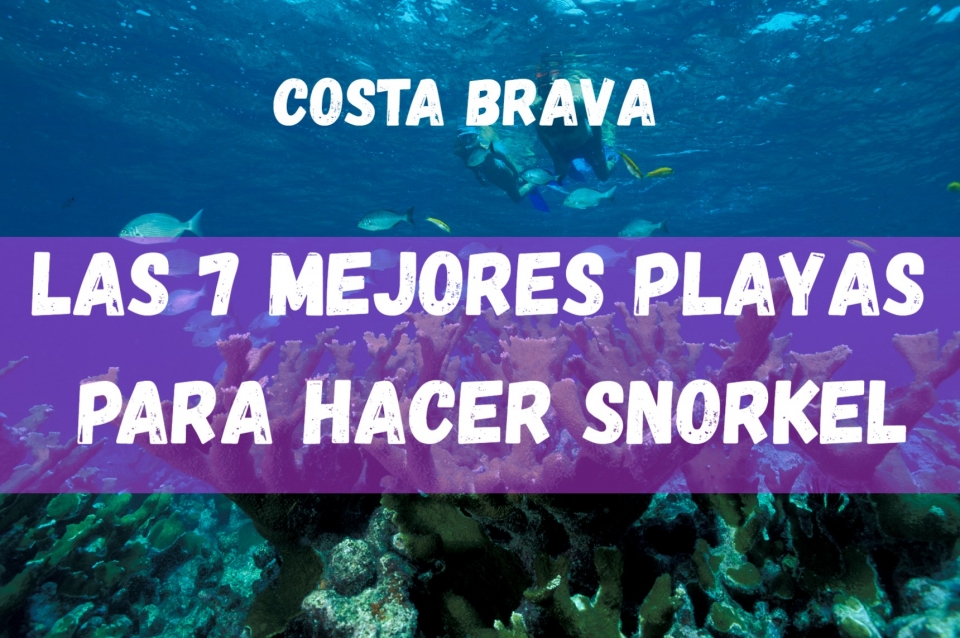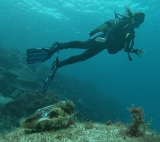Specifically, we are talking to you about the marine reserve of the island of Cabrera. This being one of the few places where you can find Mediterranean fauna and flora as it was fifty years ago. Do you want to know it in great detail?
An exciting story
Located about six miles south of Mallorca, the Cabrera archipelago is made up of 19 islets and islands. Cabrera is the largest unpopulated island in the Spanish Mediterranean, but this does not prevent it from having an exciting history.
It never had any stable population, which is somewhat surprising given its proximity to Mallorca, the traditional fishing wealth of its waters and the presence of a magnificent natural port.
The first signs of human presence date back to the Bronze Age, from which there remain talaiotic remains, which perhaps correspond to temporary occupations of the islet.

In the following centuries, Cabrera was a resting place and refuge for Carthaginians, Phoenicians and Romans on their commercial routes; amphorae and wrecks are part of the submerged legacy left by these people, testimony of Mediterranean culture.
During the 16th to 19th centuries
In the 16th century, it would be the Turkish and Berber pirates who used the archipelago and its natural port as a base for their raids on the southern coast of Mallorca. To defend the islands from these invasions, the castle was built at the entrance to the port, a wonderful architectural work completely integrated into the landscape. The fortification seems to have sprung from the bowels of the earth and appears as a natural extension of the mountain, dominating the entire inlet of the island.
From 1808 to 1814, a macabre episode takes place on the island, which represents the dark history of this archipelago. After the defeat inflicted on Napoleon's troops in the Battle of Bailén, some 9,000 French prisoners were confined in Cabrera and abandoned to their fate. For six long years the Mediterranean will be the only jailer that kept them confined.
Murders, disease, and lack of food and water reduced the population. , of which only 3,600 people survived, who were freed in 1814. If we visit the castle, we will observe in its walls morbid inscriptions that French prisoners once wrote.
Maritime-terrestrial national park of the Cabrera archipelago
Today, Cabrera has become an authentic biological treasure, a wonderful reserve to contemplate and enjoy the true Mediterranean. It is the destination sought by many sailors on summer days to enjoy its magnificent landscapes. Its waters and islets are home to a multitude of threatened species from plants, reptiles, birds, various marine species... Cabrera has become an authentic biodiversity reserve.
The vertical walls that plunge sharply into the depths, with large blocks at the foot of the walls, are the landscape that dominates the Cabrera dives.

Of the entire archipelago, diving is only allowed in a restricted area where you can dive surrounded by enormous and countless groupers. We will observe, up close, one of the kings of the Mediterranean, ancient dominator of the rocky bottoms and today practically disappeared from almost the entire Spanish coast.
The seabed is home to wonderful and varied dives: remains of wrecks loaded with amphorae, walls of large red gorgonians (Paramuricea clavata), underwater caves with red coral (Coralium rubrum), large meadows of posidonia (Posidonia oceanica) with fields of large nacras (Pinna nobilis), the largest mollusk in the Mediterranean, etc. The exceptional visibility, up to 50 meters, makes us enjoy our underwater tours to the fullest.
The best dives
We will not have the opportunity to observe all the diving possibilities due to the diving restrictions imposed by the park regulations. The most popular diving area is in the vicinity of Cap Llebeig, located at the exit of the port of Cabrera. It is a steep cliff whose walls plunge sharply into the depths. Thus, when diving we must pay attention to the depth gauge.
Due to the exceptional diving conditions, with visibilities around 50 meters, and the verticality of the marine platform, the sensation of descending is not as evident as it can be in less favorable conditions. favorable. Therefore, it is easy to become engrossed in the enjoyment of the dive and present ourselves at committed depths around 40 meters.
The attraction of diving in this area is in the abundance and variety of fish that we will see. We will immediately appreciate the so-called "reserve effect", due to the high presence of fish species that have almost been wiped out on the vast majority of our coasts: croaker, haddock, grouper, etc.
This area of the park is the most visited by divers attracted by the concentration of large groupers (Epinephelus marginatus) that can exceed thirty kilos. The groupers approach the divers at minimum distances due to the acquired habit of receiving food, despite the fact that it is prohibited by park regulations.
To make the most of the dive, it is recommended to descend directly to the maximum depth (30 to 40 meters), where the minutes will pass very quickly observing the large groupers and groups of enormous dentex. The limited time spent at this depth will force us to ascend, little by little, to more superficial waters.
There we can exhaust our dive, while making our safety stop, contemplating the beautiful underwater landscape of the shallow waters, where large schools of sea bream swim. Lovers of detail enjoy here the covering of the rock blocks, the walls and the overhangs.

The abuses of man
Within the waters of the park, professional fishing continues to be practiced. The trammel net, the moruna, and the longline are the most frequent gears used by the professional fleet that fishes in the waters of the archipelago. The reserve effect that explains the recovery of schools of certain species of fish (groupers, dentex, etc.) is due to the total prohibition of underwater fishing.
The Cabrera National Park is evident proof of the damage of this sport. The only limitation that exists, compared to the rest of the Mallorcan coast, is theimpossibility of practicing underwater fishing, an activity that has annihilated numerous species of the rocky bottoms (grouper , corvinas, etc.) along the Mallorcan coast.
Cabrera is an island of life within an overexploited sea and almost favorable. Therefore, it is easy to become engrossed in the enjoyment of the dive and present ourselves at committed depths around 40 meters.
The attraction of diving in this area is in the abundance and variety of fish that we will see. We will immediately appreciate the so-called "reserve effect", due to the high presence of fish species that have almost been wiped out on the vast majority of our coasts: croaker, haddock, grouper, etc.
This area of the park is the most visited by divers attracted by the concentration of large groupers (Epinephelus marginatus) that can exceed thirty kilos. The groupers approach the divers at minimum distances due to the acquired habit of receiving food, despite the fact that it is prohibited by park regulations.
To make the most of the dive, it is recommended to descend directly to the maximum depth (30 to 40 meters), where the minutes will pass very quickly observing the large groupers and groups of enormous dentex. The limited time spent at this depth will force us to ascend, little by little, to more superficial waters.
There we can exhaust our dive, while making our safety stop, contemplating the beautiful underwater landscape of the shallow waters, where large schools of sea bream swim. Lovers of detail enjoy here the covering of the rock blocks, the walls and the overhangs.

The abuses of man
Within the waters of the park, professional fishing continues to be practiced. The trammel net, the moruna, and the longline are the most frequent gears used by the professional fleet that fishes in the waters of the archipelago. The reserve effect that explains the recovery of schools of certain species of fish (groupers, dentex, etc.) is due to the total prohibition of underwater fishing.
The Cabrera National Park is evident proof of the damage of this sport. The only limitation that exists, compared to the rest of the Mallorcan coast, is theimpossibility of practicing underwater fishing, an activity that has annihilated numerous species of the rocky bottoms (grouper , corvinas, etc.) along the Mallorcan coast.
Cabrera is an island of life within an overexploited sea and almost
















